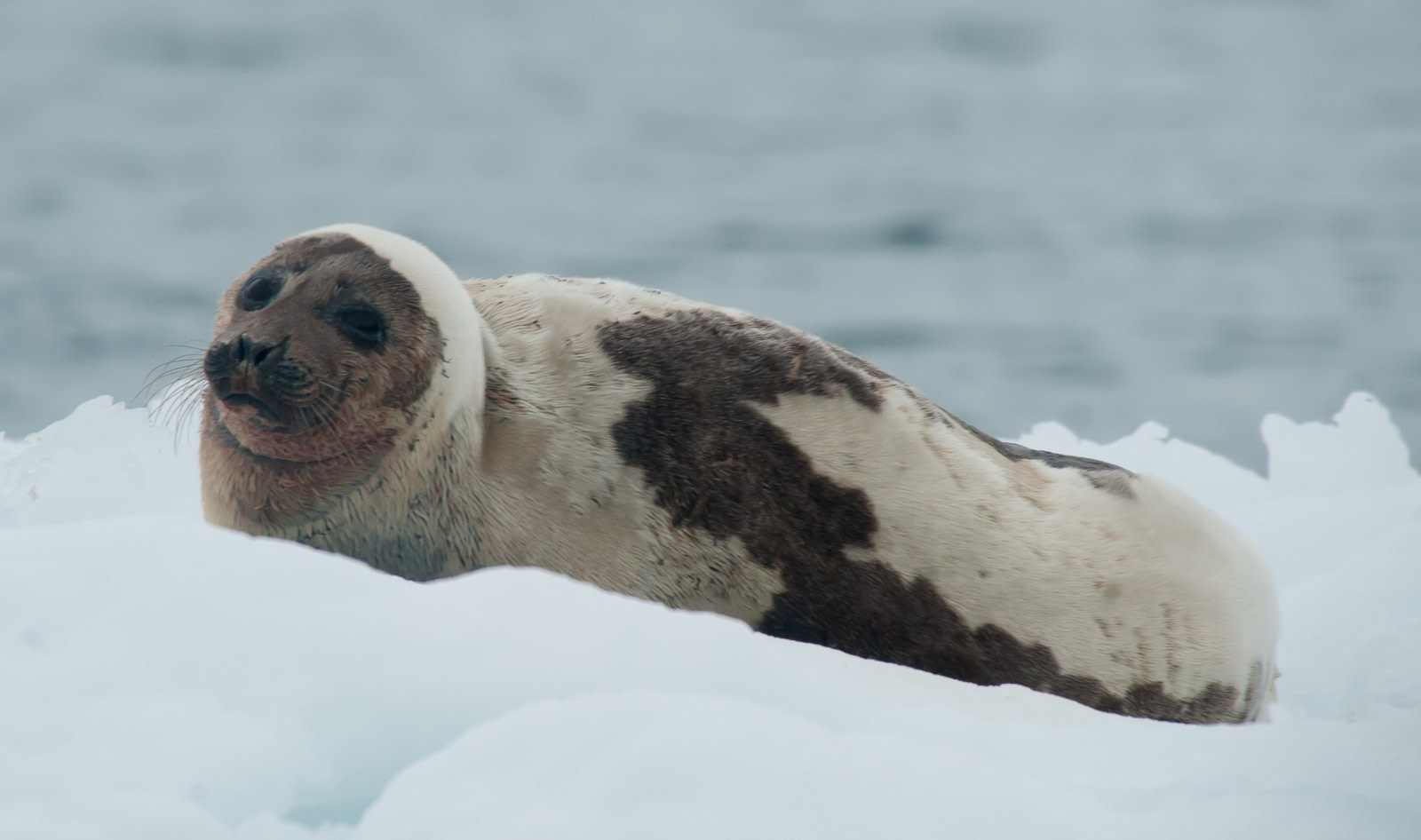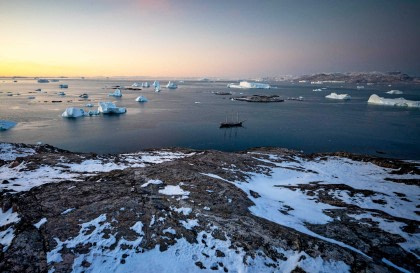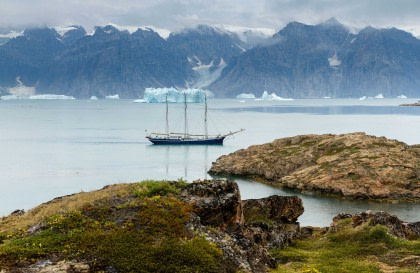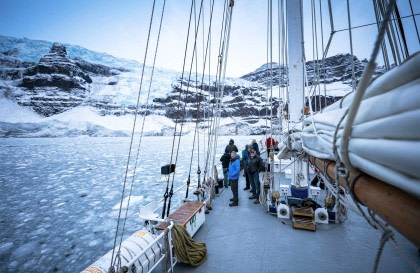Harp seals harping on in Greenland
Harp seals are moderately sized species, averaging 1.6 metres in length and weigh around 130 kilograms. Both the males and females are of similar size and weight, with males only slightly larger than the females. They have a thick, robust body with a small broad and flat head, short narrow flippers and a narrow muzzle.
Abundant numbers of harp seals
The harp seals are one of the most abundant seal species in the northern hemisphere with one count estimating their total population to be more than 9 million. There are three specific populations of harp seals. The first is found off the coast of east Canada, the second off eastern Russia and the third in eastern Greenland. While they may be lumped together in these groups the harp seal is not afraid of migrating long distances, with adult seals migrating north of the breeding zone to molt before migrating to their arctic summer feeding grounds: a trip that can be as long as 2,500 miles.
Notorious for milk-stealing
While the harp seal’s courtship between a male and female usually occurs on land, mating is often done in the water. When the female is around five or six she is mature enough to mate and every year she will return to the ice to give birth to one pup in February. The total time a female is pregnant is around 7.5 months.
When they do give birth, the mother will find a stable spot on the ice, an icepack, to ensure their pup has the best chance of surviving as they are unable to swim or find food. The mother will nurse the pup with her milk that is around 50% fat for 12 days.
One of the quirks about harp pups is that they are known to be ‘milk stealers’ with young pups suckling on the milk of an unrelated mother seal. This can have fatal consequences for that mother’s young pup as it will not receive enough nutrients from her milk.
The changing of the colours
One of the distinctive features of harp seals is that their colour changes with age. Newborn seals are born with a thick yellow fur and are called ‘yellowcoats’. After about three days their fur becomes bleached and turns white, becoming ‘whitecoats’. The pups then start shredding their white fur after about 12 days old and then are called ‘raggedy jackets’.
After the 18th day, the pups have lost all of their white fur to reveal a silvery coat with small black sports along their sides and back. At this stage they are known as ‘beaters’. After their first birthday, the seals are known as ‘bedlamers’ and start to undergo annual molts.
Another interesting fact is that as they grow older and continue to molt their spots become larger and start to form horseshoe or ‘harp’-shaped markings along their sides and back. A fully mature adult harp seal is lightly grey with a black face, often with a black chin, upper-neck and top of the head.
The harp seal has a buffet diet
The harp seal does not have a consistent diet, instead what they eat depends on what is available and so they will eat anything from polar, arctic and atlantic cod, herring, sculpin, redfish as well as crustaceans including shrimp, krill and prawns with the seals often diving to depths of 100 metres to catch their meal. In fact, their recorded diet incudes 67 species of fish and 70 species of invertebrates. Pups and juveniles generally take a lot of invertebrate prey especially Euphausiids and pegagic Amphipods. Around Greenland, adult harp seals eat pelagic crustaceans and fish while in the Barents Sea harper seals eat amphipods, shrimps and small fish including polar cod.
Working harder than the minke whale for food
Because of their high quality diet they have a short digestive tract in comparison with herbivores animals with their short intestines easily soaking up the nutrients. However, they do have a longer intestinal tract than the minke whale, which has a diet comparable to the harp seal. Scientists speculate that this could be due to harp seals having to work harder than the whales to get to the locations where their prey are commonly found. Specifically, whales only live in the sea while the harp seal lives on both land and in the sea and so the seals tire easily and so they need a larger intestinal tract to receive more nutrients than a whale would eating the same diet.
Harp seals’ life out to sea
While harp seals do venture onto land, they in fact spend very little of their time on it. Instead they are often in the waters of the northern Atlantic and Arctic oceans. As such, harp seals are considered semi aquatic marine mammals as they can spend around 15 minutes below the surface between breaths. This is made possible by the seals lowering their heart rate – at times they can lower their heart rate by 90% – with only their nervous system and sense organs receiving the normal flow of blood.
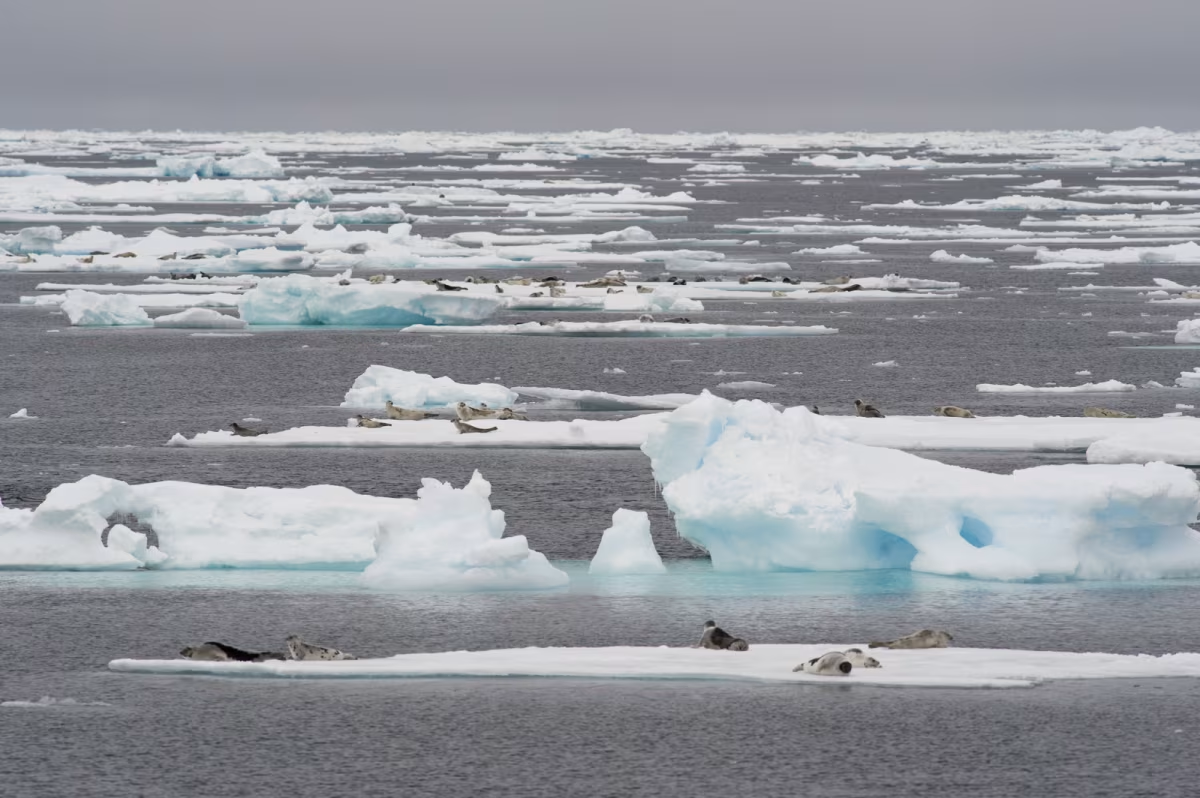
© Josh Harrison Photography
Harp seals experts at deep diving
When in the cold waters of the arctic harp seals are experts at conserving their body heat with the seals having a thick layer of blubber to keep their body heat in. At the same time because they can lower their heart rate so low they can redirect their blood circulation away from the surfaces of their body preventing a significant amount of heat loss. They have lungs that can completely collapse during deep divers with the species having an anti-adhesive system lining the lungs that allow the lung to reopen post-deep dive.
Eyes adapting to the bright light
Harp seals have eyes that can see both above and below the surface of the water. Because sight is key to successfully navigating the oceans the harp seals’ eyes have evolved to become proportionately larger than other species and have large spherical lenses that help them focus on things more easily.
To deal with the glare of the sun off the arctic sea ice the seals’ eyes have evolved to have a mobile pupil. Like other species in harsh environments the seals have a membrane that covers their eyes to protect them from the arctic environment’s extreme conditions.
Satellite data protecting harp seals
Since 2009, the Research and Development Center ScanEx has been engaged in ice situation monitoring in the White Sea for the organisation of ice-breaker and ship navigation around harp seals’ whelping grounds. The locations of animal accumulation on detailed satellite images are detected using indirect signatures including holes (blow-throughs) in ice and linear trails left by animals moving to holes.
The detection of large groupings of harp seals from the satellite imagery then helps arrange ship traffic around the whelping groups. As part of this process, ScanEx transfers its data to the Ice Operations Headquarters of the Port of Archangelsk and the Northern Administration of the Hydrometeorological and Environmental Monitoring for routing ships around the whelping groups.
